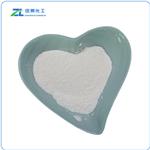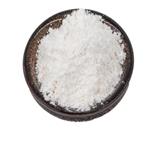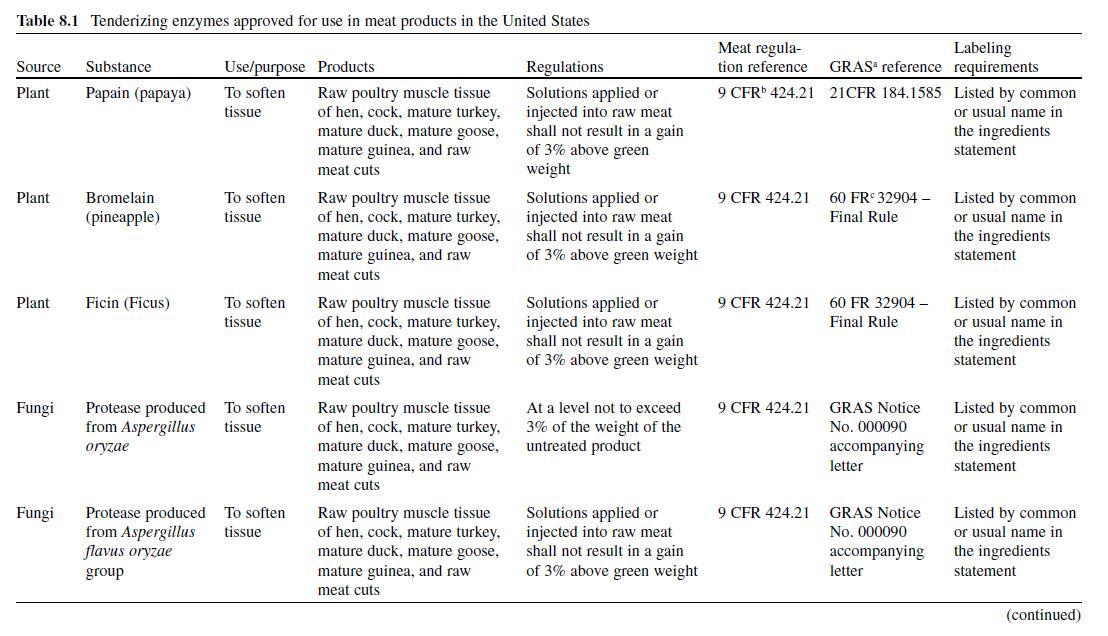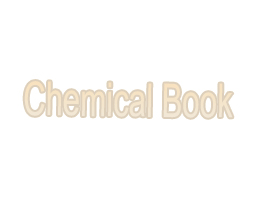Collagen: Properties, Applications, Collagen as an Added Ingredient etc.
Mar 16,2022
Collagen, a family of insoluble fibrous proteins found in all multicellular organisms, is one of the most abundant proteins in nature. It is the most abundant protein in mammals, comprising about 25–30% of total body protein (Bailey & Light, 1989) , 1–2% of bovine skeletal muscle, and 4–6% of high-connective tissue muscles (Whiting, 1989) . It is a major component of skin, bone, cartilage, tendon, blood vessels, basement membrane (endomysium), and teeth (Bandman, 1987 ; Stryer, 1988) . Collagen is a rod-shaped molecule approximately 300 nm in length and 1.5 nm in diameter. Its basic subunit is tropocollagen (mol wt 300 kDa), which consists of three helical polypeptide α -chains ( α 1, α 2, and α 3) coiled around one another into a triple-stranded superhelix stabilized by hydrogen bonds. Variations in the composition of the α -chains of tropocollagen give rise to various collagen phenotypes, 19 of which have been identified (Bailey & Paul, 1998 ; McCormick & Phillips, 1999) . Of these, the most abundant in meat are the fibrous types I, III, and V, and the nonfibrous type IV. Type I collagen predominates in bone, tendon, skin, and the epimysium, types I and III in the perimysium, and types III, IV, and V in the endomysium (Sims & Bailey, 1981) . The molecule’s C- and N-termini (about 2–3% of the molecule from either end) consist of small, nonhelical regions called telopeptides.
The amino acid composition and sequence of collagen is very unique. It is approximately 33% glycine, 12% proline, 11% hydroxyproline, and 11% alanine, is devoid of tryptophan, and contains the unusual amino acids 3-hydroxyproline, 4-hydroxyproline, and 5-hydroxylysine (Bechtel, 1986) . A collagen chain has three amino acid residues per helical turn, with every third amino acid being glycine. This allows glycine, given its small size, to occupy the helice’s interior positions.
The collagen molecule is stabilized by intra- and intermolecular covalent crosslinks, which are formed when the enzyme lysyl oxidase catalyzes the oxidative deamination of lysine and hydroxylysine to form the aldehydes allysine and hydroxyallysine, respectively. These aldehydes can then form cross-links by reacting with each other (through an aldol condensation), or with a lysine or hydroxylysine residue (to yield a reduced Schiff base product) (Foegeding, Lanier, & Hultin, 1996) . The resulting cross-links are reducible and divalent (i.e., they are capable of linking only two collagen molecules together). As an animal ages, these divalent, reducible cross-links gradually convert into more stable nonreducible, trivalent cross-links (Eyre, 1987 ; Purslow, 1999) . The common trivalent cross-link hydroxylysylpyridinoline (HP) may be formed either by the reaction of a divalent ketoamine cross-link with a free hydroxyallysine (McCormick & Phillips, 1999) , or by the interaction of two divalent ketoamine cross-links, which releases a hydroxylysine or lysine residue (Eyre, 1987) . Trivalent and multivalent cross-links are very stable (e.g., HP cross-links are heat stable) and possess the ability to link adjacent collagen fibrils; in this way they add strength and rigidity to the intramuscular connective tissue (IMCT) matrix and very likely contribute to the increased toughness of meat from older animals.
Properties and Applications
Collagen sources for use in processed meats include skin, hide, bone, offal, and skeletal muscle (Bailey & Light, 1989) . Collagen can be added to meat products either (1) as a constituent of high-collagen meat raw materials (typically highcollagen tissues, such as skeletal muscle connective tissue, beef hides, pork skins, and tripe) or (2) in concentrated form as a direct additive. It has been concentrated from bone (as bone collagen extract), beef hides, pork skins, and skeletal meat connective tissue (Gillett, 1987) . Skeletal meat collagen can be concentrated by mechanical desinewing or extracted by low-temperature rendering followed by extrusion, dehydration, grinding, flaking, or milling (Gillett, 1987 ; Jobling, 1994 ; Prabhu & Doerscher, 2000 ; Prabhu & Hull, 2001) . In either form, collagen can significantly affect the processability and organoleptic attributes of meat products.
Raw Collagen
Most meat trimmings used in the meat processing industry contain varying amounts of collagen with varying degrees of cross-linking, depending on the age of the animal from which they are harvested. When heated to 60–65°C, the collagen triple helix begins to unravel into single strands, to shrink, and to dissolve (Voutila, Mullen, Ruusunen, Troy, & Puolanne, 2007 ; Whiting, 1989) , leading, in the case of comminuted meat products, to a disruption of the myosin gel, which forms at lower temperatures (Gillett, 1987) . This can result in batter instability and breakdown, and lead to increased losses of fluid (i.e., reduced water-holding capacity) and fat (fatting out), as well as the possible appearance of gel pockets and surface gelatin (Bailey & Light, 1989 ; Whiting, 1989) .
Collagen as an Added Ingredient
The addition of collagen to meat products as a binder has been shown to be advantageous. The functionality of the collagen is dependent on factors such as animal species and age, anatomical source, and extraction conditions. Knowledge of these factors allows for selective manipulation of the collagen’s functional properties. The potential use of collagen as a functional additive in meat products dates back to at least the late 1960s (Elias, Komanowsky, Sinnamon, & Aceto, 1970). Since then, much research has focused on its extraction from various sources (species, anatomical locations) and by various means, and on its application in various types of meat products.
The physical extraction and/or concentration of collagen usually involves particle size reduction of collagen – or high-collagen materials – by cutting, grinding, flaking, milling, or a combination of these. Frequently, dehydration and/or freezing steps are incorporated into the process. Some of these approaches have been well documented. A process has been described whereby pretreated hides are cut in strips and progressively reduced in size by cutting with a rotary knife, forcing through a screen with 0.5 to 1.0-in. openings, pumping to a centrifugal cutter with cutting head openings of 0.04–0.20 in. and, finally, pumping to a revolving disc mill to yield collagen fibers (Elias et al., 1970) . No actual application of the resulting material was reported. Beef connective tissue (CT) has been modified by sequential grinding, freezing, and flaking, and tested at levels of 0%, 10%, 20%, 30%, and 40% in meat batters formulated to 8%, 16%, and 24% fat (Eilert, Blackemer, Mandigo, & Calkins, 1993) . The modified CT increased smokehouse yields, especially in the lower fat batters (peaking at the 20% addition level), but adversely affected emulsion and smokehouse stability.
The development of low-temperature rendering systems has resulted in the commercialization of functional concentrated collagen ingredients. In this process, which may vary slightly by manufacturer, steam and hot water are added to soft materials such as meat lean and fatty trimmings and pig skins. The resulting slurry is then transferred to a decanter centrifuge, which separates it into two streams. The first, liquid, stream contains fat, protein, and water, and is used in the manufacture of meat stocks and broths, as discussed later in this chapter (see section on Stocks and Broths). The second, semisolid, stream is typically dehydrated and further processed by grinding, flaking, milling or granulating, to obtain dry functional collagen ingredients (Jobling, 1994) . One commercial pork collagen product (MyoGel? Plus, Proliant Inc., Ankeny, IA; 85% protein, 12% fat ), obtained by “l(fā)ow temperature processing of fresh pork trimmings” in a process that involves extrusion and dehydration, followed by drying and milling into a granular form (Prabhu, 2002 ; Prabhu & Doerscher, 2000) , has been found to be capable of binding up to four times its weight in water. Addition of this ingredient to 22–23% fat frankfurters (at levels from 0% to 3.5% in 0.5% increments) and 3% fat restructured ham (at 0%, 1.0%, 2.0%, and 3.0%) was found to help control package purge over 8 weeks of refrigerated storage and to increase cook yields by approx. 1% in frankfurters (at up to 1.0% addition, beyond which no significant increases were observed), but not in ham (Prabhu, Doerscher, & Hull, 2004) . In another study, this same commercial pork collagen product, at a 3% usage level, reduced expressible moisture, but not cooking loss, in boneless cured ham manufactured with up to 100% PSE (pale, soft, exudative) meat. However, when only non-PSE meat was used, a decrease in both cooking loss and expressible moisture was observed with addition of pork collagen (Schilling, Mink, Gochenour, Marriott, & Alvarado, 2003) .
In an effort to more clearly elucidate the interaction of concentrated, dehydrated pork collagen (MyoGel? Plus, Proliant Inc.) with myofibrillar proteins, a study evaluated the effects of its addition on thermal and viscoelastic properties of purified porcine myofibrillar protein gels (Doerscher, Briggs, & Lonergan, 2003). It was reported that replacement of 20% or more of the myofibrillar protein with pork collagen resulted in a decreased rate of gel formation, which led the researchers to suggest that perhaps pork collagen interfered with formation of the myofibrillar protein heat-set gel matrix. Of the pork collagen addition levels tested (0%, 10%, 20%, 30%, 40%, and 50%), 10% was found to be the optimum in terms of waterholding capacity, gel firmness, and rate of gel formation. Differential scanning calorimetry (DSC) and oscillatory rheology measurements in this study failed to detect specific protein–protein interactions between pork collagen and myofibrillar proteins.
Similar functional collagen proteins (>70% protein,<28% fat) have also been commercially produced by low-temperature processing of poultry (chicken or turkey) skin, and have been promoted to increase cook yields and decrease formulation costs in various poultry products due to their gelling and water-binding properties (Prabhu, 2002, 2003 ).
Certain extraction and/or treatment conditions can further modify the functional properties of collagen. Chief among these are heat, chemicals, and enzymes.
Heat-Modified Collagen. The functional properties of collagen can be modified by heating collagen or collagen-rich raw materials under different time/ temperature combinations, some of which have been reported in the literature (e.g., 100°C for 30, 60 or 90 min; Sadowska et al., 1980) . During processing of most processed meats, native collagen generally melts and becomes gelatin too late in the process (i.e., at temperatures between 75°C and 80°C) to become a part of the batter’s gel structure. Precooked collagen, on the other hand, solubilizes early during chopping and is therefore able to provide functionality to the meat batter (Whiting, 1989) . This was borne out in a study that evaluated the effect of temperature on the water-binding ability of concentrated pork skin CT gels (Osburn, Mandigo, & Eskridge, 1997) . Pork skin CT was first obtained by cutting pork skin into strips, followed by freezing, grinding, refreezing, and flaking. It was then combined with varying amounts of water and heated at 50°C, 60°C, 70°C, or 80°C for 30 min. Under these conditions, it was found that gels produced by heating to at least 70°C had the highest water-binding ability. After cooling, these 70°C gels were tested in reduced-fat (2.0%, 3.5%, 4.3%, 6.8%, and 12.0% fat) bologna, resulting in decreased hardness and increased juiciness.
Enzyme-Modified Collagen. The use of enzyme-modified collagen as an extender or binder for processed meat products is limited by the fact that excessive hydrolysis of collagen can result in high levels of small peptide fragments, which could in turn lead to decreased water-holding and gelling properties. In one study (Satterlee, Zachariah, & Levin, 1973) , beef and pork skin collagen were hydrolyzed with either crude pancreatin (a mixture of pancreatic enzymes, such as trypsin, amylase, and lipase), papain or pepsin, and added to sausage emulsions as replacements for nonfat dry milk (NFDM), with mixed results. Shear strength of hydrolysate-containing sausages was lower than for the NFDMcontaining control and, although emulsion stability of hydrolysate-containing sausages was slightly higher than for the control, this difference was probably not practically significant. Commercially, the cost of the enzymatic treatment of collagen could, in some instances, make the material too costly in comparison to NFDM and other binders. At present, the enzyme modification of collagen appears to be commercially restricted to the production of flavor-enhancing hydrolysate preparations, as discussed later.
Regulatory Status
Pork collagen is approved in the United States for use in standardized and nonstandardized processed meat and poultry products as a binder and to reduce purge, at a maximum level of 3.5% (USDA-FSIS, 2007) .
- Related articles
- Related Qustion
- Insoluble fibrous protein---Collagen Mar 4, 2022
?Collagen, a family of insoluble fibrous proteins found in all multicellular organisms, is one of the most abundant proteins in nature.
- What to know about collagen supplements Nov 29, 2019
Collagen is one of the most plentiful proteins in mammals. It is responsible for several biological functions, one of which is to provide structural support in connective tissue, muscle, and skin.
- Collagen: ‘Fountain of Youth’ or Edible Hoax? Nov 29, 2019
For centuries, Chinese women have viewed collagen as a Fountain of Youth, routinely consuming foods like donkey skin in hopes of smoothing withered skin and preserving aging joints. In the United States, collagen became best known in the 19
Propyl acetate is an acetate ester obtained by the formal condensation of acetic acid with propanol. It has a role as a fragrance and a plant metabolite.....
Mar 16,2022Organic Synthesis IntermediateTenderizing enzymes generally come from one of three sources: plant, fungal, or bacterial. Plant sources have the longest history, with fungal and bacterial being more recent developments.....
Mar 16,2022Biochemical EngineeringCollagen
9064-67-9You may like
- Collagen
-

- $20.00 / 1kg
- 2025-01-10
- CAS:9064-67-9
- Min. Order: 1kg
- Purity: 99%
- Supply Ability: 5000kg/Week
- Collagen
-

- $999.00/ ton
- 2025-01-10
- CAS:9064-67-9
- Min. Order: 1ton
- Purity: 99%
- Supply Ability: 5000
- Collagen (cattle skin)
-

- $39.00 / 100KG
- 2025-01-06
- CAS:9064-67-9
- Min. Order: 100KG
- Purity: 98%
- Supply Ability: 1-200mt





